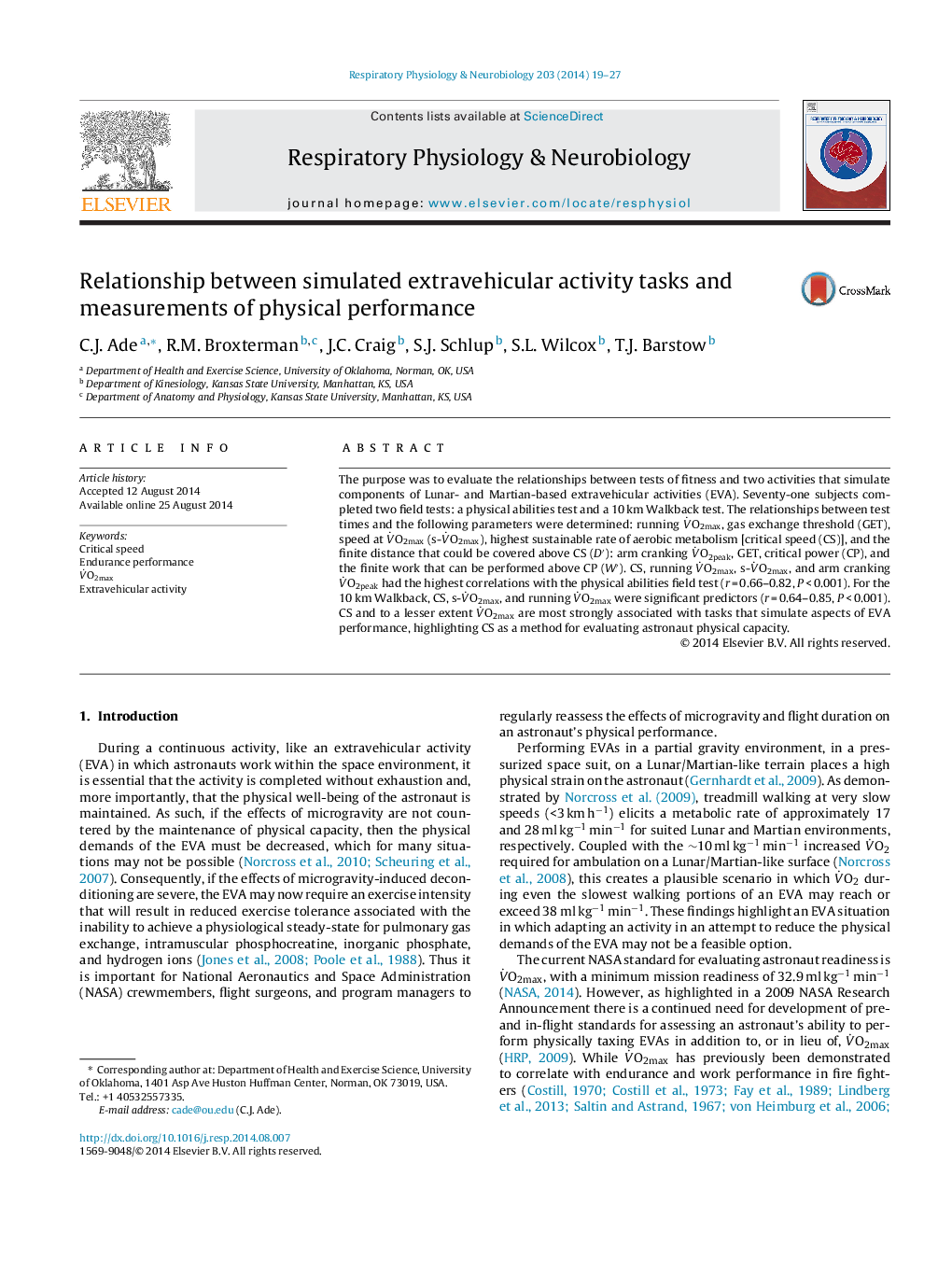| Article ID | Journal | Published Year | Pages | File Type |
|---|---|---|---|---|
| 5925920 | Respiratory Physiology & Neurobiology | 2014 | 9 Pages |
â¢CS, running VËO2max, s-VËO2max, and arm cranking VËO2peak had the highest correlations with the physical abilities field test.â¢For both men and women, CS had the highest correlation with physical abilities field test performance.â¢For the 10 km Walkback, CS, s-VËO2max, and running VËO2max were significant predictors in both men and women.â¢The present study indicates that CS and to a lesser extent VËO2max are associated with two simulated EVA tests.
The purpose was to evaluate the relationships between tests of fitness and two activities that simulate components of Lunar- and Martian-based extravehicular activities (EVA). Seventy-one subjects completed two field tests: a physical abilities test and a 10 km Walkback test. The relationships between test times and the following parameters were determined: running VËO2max, gas exchange threshold (GET), speed at VËO2max (s-VËO2max), highest sustainable rate of aerobic metabolism [critical speed (CS)], and the finite distance that could be covered above CS (Dâ²): arm cranking VËO2peak, GET, critical power (CP), and the finite work that can be performed above CP (Wâ²). CS, running VËO2max, s-VËO2max, and arm cranking VËO2peak had the highest correlations with the physical abilities field test (r = 0.66-0.82, P < 0.001). For the 10 km Walkback, CS, s-VËO2max, and running VËO2max were significant predictors (r = 0.64-0.85, P < 0.001). CS and to a lesser extent VËO2max are most strongly associated with tasks that simulate aspects of EVA performance, highlighting CS as a method for evaluating astronaut physical capacity.
